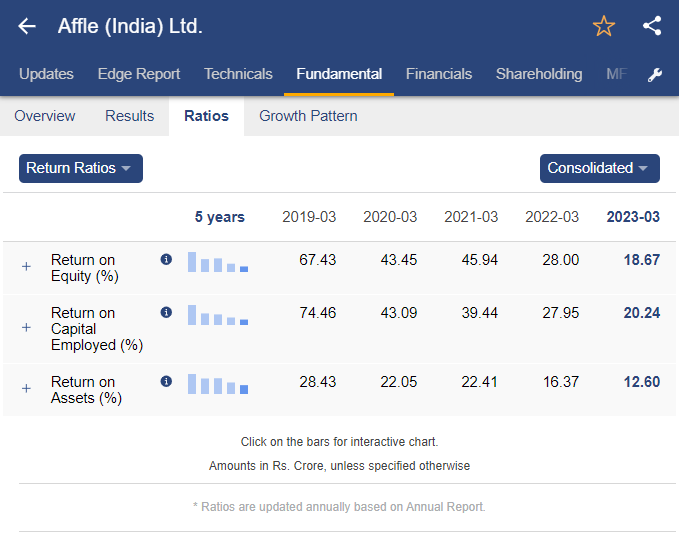The coverage of markets on trading platforms for AI analysis and prediction of stocks is crucial because it defines the types of assets and markets you can access. A platform with extensive market coverage will allow you to diversify your portfolio, explore new opportunities around the world, and adjust to various trading strategies. These are the top 10 tips to determine the market coverage of these platforms.
1. Evaluate Supported Asset Classes
Stocks - Make sure you have access to major stock exchanges such as NYSE and NASDAQ. Also, ensure that your platform offers small-caps and mid-caps.
ETFs Check whether the platform lets you choose from a large number of ETFs. This can provide you with a variety of exposure.
Options and Futures: Find out whether the platform is compatible with derivatives, such as options or futures, as well as other leveraged products.
Forex and commodities: Determine whether the platform can support forex pairs, precious-metals, agricultural products, energy commodities, and other commodities.
Cryptocurrencies: Find out if the platform supports major cryptocurrencies (e.g., Bitcoin, Ethereum) and altcoins.
2. Make sure you check the area of coverage
Global markets. Ensure your platform covers the most important global markets that includes North America Europe Asia-Pacific and emerging markets.
Concentrate on regional markets: Find out if a platform is focused on particular markets or regions which are in line with your goals in trading.
Local exchanges: Determine whether your platform is compatible with regional and local exchanges that are relevant to you or your business plan.
3. Delayed Data Vs. Delayed Data
The availability of real-time data is crucial for quick decision making particularly when trading is in the active phase.
Delayed data - Check whether delayed data is free or is available at a reduced cost. This could be enough for investors who are looking to invest for the long-term.
Data latency: Check whether the platform reduces the latency of real-time data feeds especially in high-frequency trading.
4. Assess Historical Data Availability
The depth of historical data: Verify that the platform has ample data (e.g. more than 10 years old) to backtest.
Review the accuracy of data from the past.
Corporate actions: Examine to see if data is accounted for in the past. Dividends, stock splits, and all other corporate actions must be included.
5. Find out the market's depths and place an order for books
Level 2 data: Ensure that the platform contains Level 2 data to aid in price discovery and improved execution.
Bid-ask Spreads: Make sure that the platform displays real-time spreads for bid and ask to ensure precise pricing.
Volume data - Verify whether the platform provides extensive volume data to analyze the market's activity and liquidity.
6. Assess the Coverage of Indices Sectors
Major indices: Ensure that the platform contains important benchmarking indices, index-based strategies, as well as other reasons (e.g. S&P 500, NASDAQ 100, FTSE 100).
Sector-specific data for targeted analysis, you should determine if the platform has information for specific industries (e.g. health care, technology, etc.).
Customized indexes. Check if your platform permits you to create and track custom indexes on the criteria that you set.
7. Integrate Sentiment and News Data
News feeds - Make sure your platform is equipped with the most up-to-date market-driven news feeds (e.g. Bloomberg, Reuters).
Use the tool's sentiment analysis using information from social media, news or any other source.
Event-driven strategies: Determine whether the platform is compatible with event-driven trading strategies (e.g., earnings announcements and economic reports).
8. Look for Multimarket Trading capabilities.
Cross-market trading: Make sure the platform supports trading across a variety of markets and asset classes through one interface.
Currency conversion: Verify if the platform can handle multi-currency accounts and automated currency conversion to trade internationally.
Verify that you are in compliance with time zones.
9. Examine the coverage of alternative sources
Alternative data: To gain unique insights, check if your platform uses other data sources (e.g. satellite imagery Web traffic, satellite imagery card transactions).
ESG data: Determine whether the platform offers environmental Governance, Social and Governance (ESG), data to help investors make socially responsible decisions.
Macroeconomic Data: Check whether the platform contains macroeconomic indicators, such as GDP, inflation and interest rates.
Review the User Feedback and Market Reputation
Reviews from users: Check for reviews from users to gain a better understanding of the platform.
Reputation of the industry: Find out if there are any awards or experts who recognize the platform for its broad coverage of markets.
Seek out testimonials that show the platform's effectiveness in certain markets and asset classes.
Bonus Tips
Trial period: You can try an demo, trial or free trial to check the coverage of markets as well as the quality of data.
API access: Verify if the platform's API permits access to market data in a programmatic manner for customised analysis.
Support for customers. Make sure that the platform can provide support for data or market related inquiries.
Follow these tips to evaluate the market coverage offered by AI stock trading platforms. Select a platform that has access to the market, data, and tools you require to be successful in trading. Market coverage is crucial to diversify portfolios, find new opportunities and to adapt to changing market conditions. Read the top best free copyright trading bot for site info including trading ai bot, ai bots for trading, using ai to trade stocks, best ai stocks to invest in, best stock analysis app, stock ai, ai trading software, best stocks to invest in, ai for investing, using ai to trade stocks and more.

Top 10 Tips For Assessing Regulatory Compliance Using Ai For Trading Platforms That Predict Stocks Or Analyze Their Performance.
Regulatory compliance is a critical element when it comes to evaluating AI trading platforms for stock prediction or analysis. Compliance assures that a platform's operations are within legal guidelines. The data of the users is secure and financial regulations are adhered to, which reduces any risk of legal concerns. Here are the top 10 suggestions for evaluating the regulatory compliance of these platforms:
1. Verify the License and Registration
Regulatory Authorities: Make sure that the platform is registered with the appropriate regulatory organizations (e.g. SEC US, FCA UK and ASIC Australia) and holds an appropriate license.
Verify the broker partnership If your platform has a partnership with brokers or brokers, be sure these brokers are licensed and regulated.
Public records: Visit the official website of the regulator to verify the status of registration as well as the history of violations.
2. Assess the privacy of your data Compliance
GDPR In the event that you are operating or providing services to users in the EU, make sure that your platform is in compliance with the General Data Protection Regulation.
CCPA - California Consumer Privacy Act: Verify compliance of California users.
Data handling policies. Check the privacy policies and ensure that it clarifies how data about users is collected, shared and kept.
3. Examine the Anti-Money Laundering(AML) measures
AML policies: Ensure that the platform is equipped with robust AML policy to identify and stop any form of money laundering.
KYC Procedures: Determine if the platform has procedures in place for confirming users' identities.
Monitoring transactions: Find out if the platform is able of monitoring transactions and reporting any suspicious activities to the relevant authorities.
4. Verify compliance to Trading Regulations
Market manipulation: Make sure that the platform includes measures to protect against manipulating the market, like spoofing or wash trading.
Order types. Verify that the platform complies with the regulations pertaining to order types (e.g. there is no illegal stop loss hunting).
Best execution : Make sure that the platform employs top execution techniques to complete trades at the most competitive cost.
5. Review Cybersecurity Compliance
Data encryption: Ensure the platform uses encryption to protect the data of users in transit and in rest.
Response to incidents. Verify that there is a clearly defined incident response plan for the platform for cyberattacks as well as data breaches.
Certifications: Make sure the platform holds cybersecurity certifications (e.g., ISO 27001, SOC 2).
6. Evaluate Transparency and disclosure
Fee disclosure: Make sure the platform discloses all charges including hidden or additional fees.
Risk disclosure: Check if the platform provides clear risks disclosures. Particularly for high-risk and leveraged trading strategies.
Performance reporting: Find out if the AI platform's models are transparently and properly recorded.
7. Verify the compliance with International Regulations
Trans-border trade If you are trading internationally, ensure your platform is compliant with the regulations in all relevant jurisdictions.
Tax reporting: Determine whether a platform offers tools or reports that allow users to comply with tax regulations.
Compliance with sanctions: Verify that the platform adheres and is not allowing transactions or trading with banned countries or entities.
8. Review Record-Keeping, Audit Trails
Records of transactions: The platform should maintain detailed records on the transactions that are used for auditor and regulatory reasons.
Logs of user activity Make sure your platform records all activity by users, including logins, transactions, and the changes to account settings.
Audit readiness: Ensure that the platform has all the documentation and logs necessary for a regulatory review.
9. Verify compliance with AI-specific Regulations
Algorithmic trading regulations: If you're using a platform which supports algorithmic trading ensure that it is compatible with relevant regulatory frameworks like MiFID II or Reg SCI, in Europe and the U.S.
Fairness and impartiality: Verify whether the platform's AI models are monitored and controlled to avoid bias.
Explainability: As required by certain regulations, the platform should provide clear explanations of AI-driven decisions and forecasts.
10. Review User Commentaries as well as Regulatory Historical History
User reviews: Conduct research to assess the credibility of the platform regarding the regulatory conformance.
Regulatory history: Verify if any regulatory violations have been committed, and also fines and penalties.
Third-party auditors: Find out if the platform is regularly audited by third-party auditors to ensure it's adhering to rules and regulations.
Bonus Tips
Legal consultation: Talk to an expert in law on the platform's conformity to relevant regulations.
Trial period: Use a free trial or demo to assess the platform's compliance features and documentation.
Support for customers: Ensure that the platform offers support to answer questions or concerns that concern compliance.
Utilizing these suggestions, it is possible to determine the level of compliance with regulations among AI stock trading platforms. This will enable you to choose a company that is operating within the legal framework that safeguards your interests. Compliance does not just help minimize legal risks, it also improves confidence in the platform. Read the top https://www.inciteai.com/reviews for more info including trade ai, ai stock prediction, ai stock, ai investment stock, ai day trading, best ai stocks to buy now, artificial intelligence stocks, trade ai, ai trade, best ai copyright and more.

 Jaleel White Then & Now!
Jaleel White Then & Now! Rider Strong Then & Now!
Rider Strong Then & Now! Yasmine Bleeth Then & Now!
Yasmine Bleeth Then & Now! Brandy Then & Now!
Brandy Then & Now! Tina Louise Then & Now!
Tina Louise Then & Now!